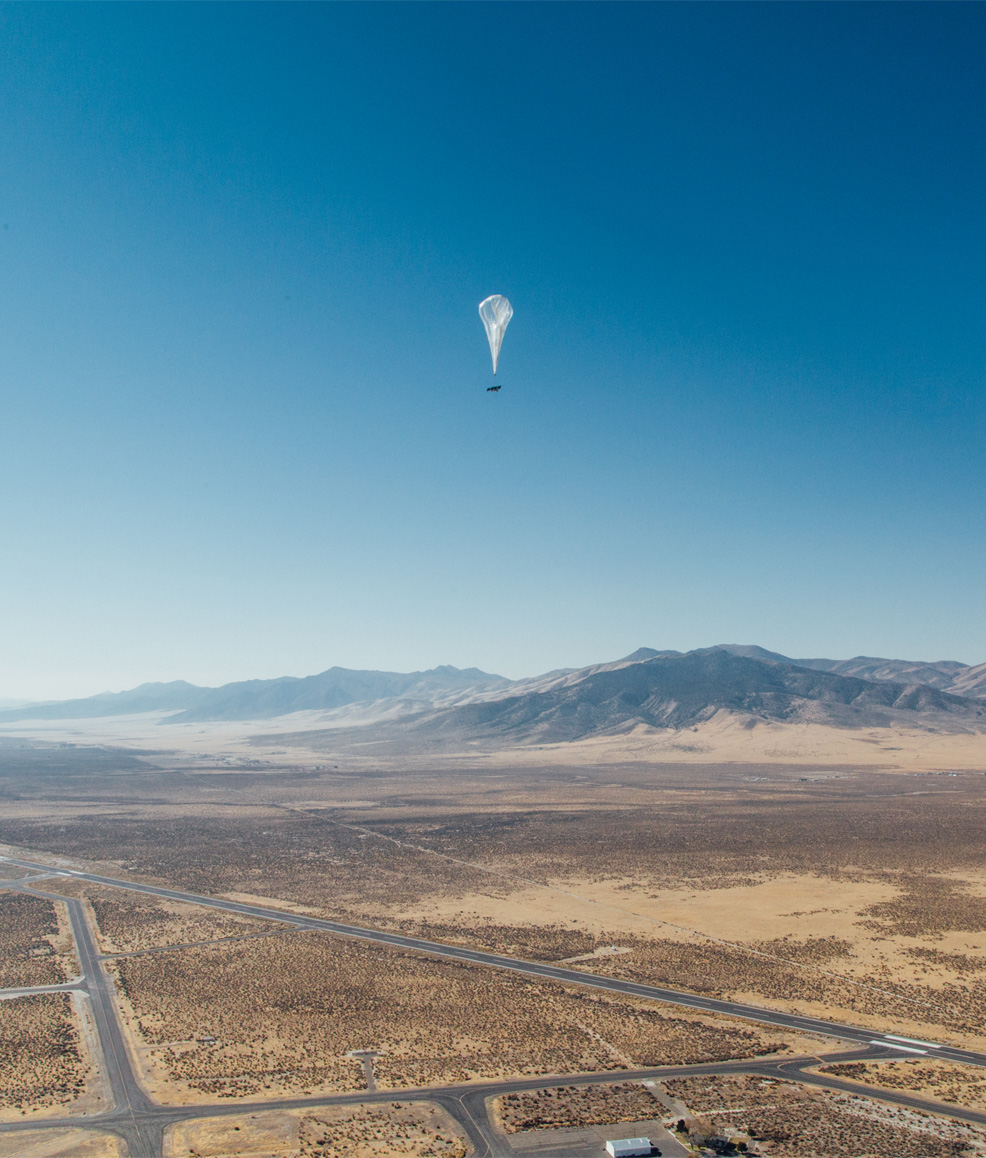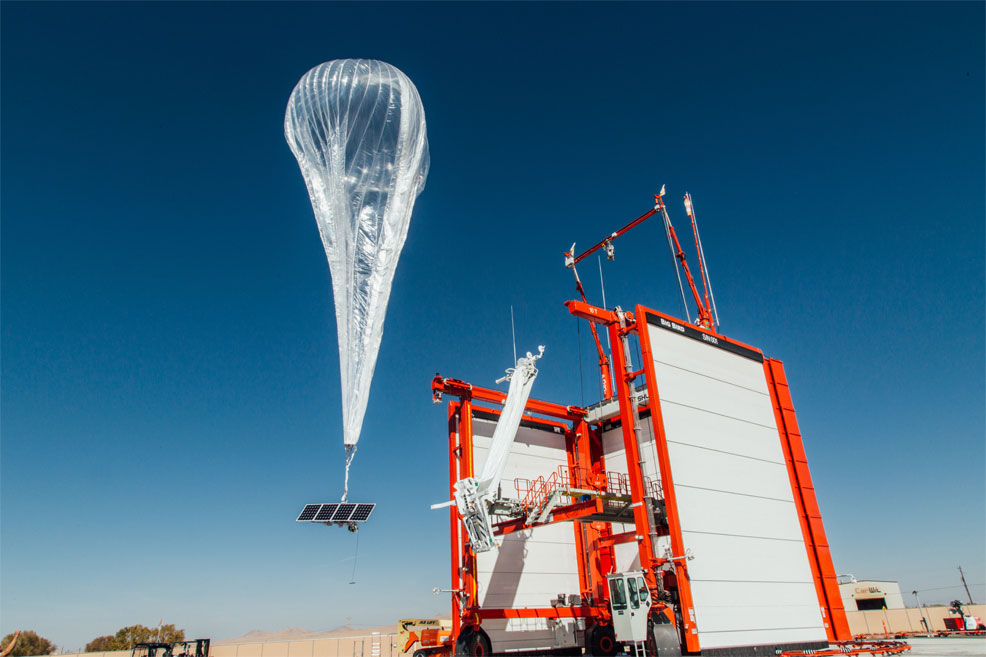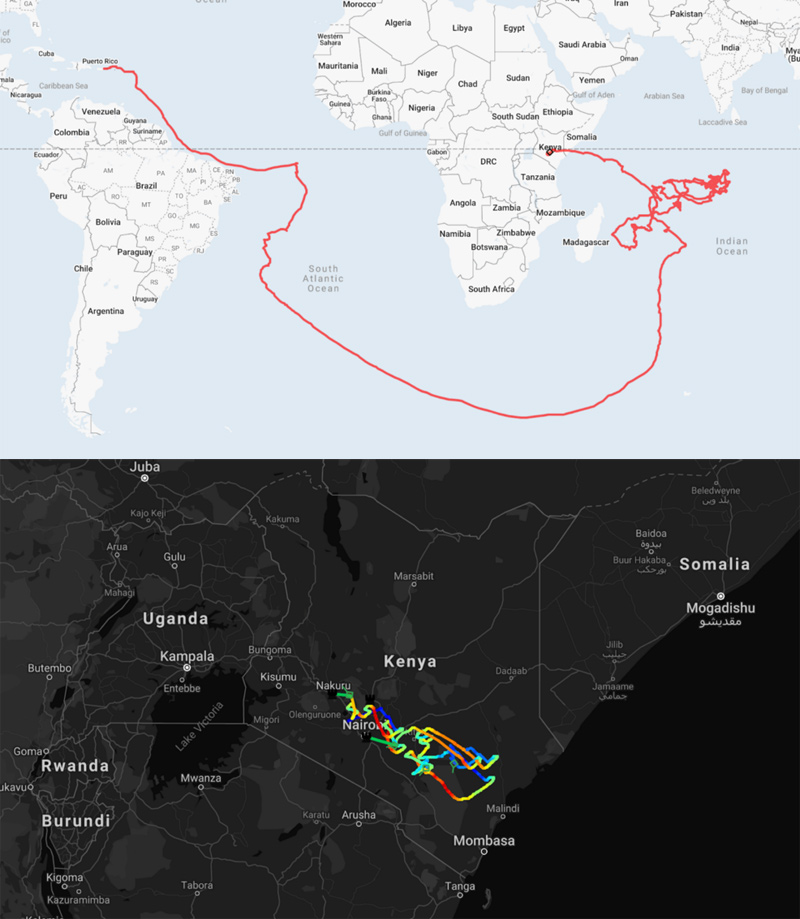
13th July 2020 Internet balloons provide 4G coverage in Kenya A fleet of balloons launched by Google's sister firm Loon will provide 4G access to remote areas of Kenya.
Project Loon – a reference to the balloons used – began in 2011 under incubation in Google X, with an official announcement as a Google project in 2013 before spinning out as a separate entity in July 2018. The company, now called Loon LLC, aims to provide Internet access to rural and remote areas, using high-altitude balloons in the stratosphere at heights ranging from 18 km (11 mi) to 25 km (16 mi). The balloons are manoeuvred by adjusting their altitude to match a wind layer with the desired speed and direction, using wind data from the National Oceanic and Atmospheric Administration (NOAA), combined with machine learning algorithms. The balloons use patch antennas – i.e. directional antennas – to transmit signals to ground stations or LTE users. Following initial trial runs in Central Valley, California, USA, pilot experiments took place in other countries including Brazil, New Zealand, Peru, Sir Lanka and in Puerto Rico. However, the project faced technical and commercial difficulties. In Sri Lanka, for example, the Loon team requested access to frequency bands already in use for mobile, TV and radio broadcasting signals, posing a risk of interference with these operators. Meanwhile, numerous incidents occurred with balloons crashing into power lines, gardens, farms and other sites.
As the technology progressed, the Loon team improved the control and navigation of the balloons. It became possible to concentrate them in areas of most need – cutting the deployment time to specific coverage areas, while also reducing the total number of balloons required, from hundreds to just dozens. The balloons would have other potential uses, in addition to remote and rural areas poorly served by existing provisions. They could be deployed to improve communication during natural disasters, for example, in regions where infrastructure might be damaged or destroyed. In 2016, Loon achieved a stable laser communication connection between two balloons over a distance of 100 km (62 miles). The connection remained stable over many hours during day and night-time and reached a data rate of 155 Mbit/s. In July 2019, a further milestone made headlines as Loon announced their fleet had reached a combined stratospheric flight total of one million hours. Loon's Chief Technology Officer, Sal Candido, revealed some of the navigational techniques the autonomous balloons now deployed – such as tacking, loitering, and figure-8's to deliver Internet coverage in the most efficient way possible. With potential for greatly increased Internet deployment in developing countries (unable to afford the laying of underground fibre cable), Loon turned its attention to Africa. Tests began in Kenya, with flights launching from two sites in Nevada and Puerto Rico. This led to the signing of Loon's first commercial agreement with Telkom Kenya, pledging to bring web access to some of Kenya's most remote regions.
The balloons' 4G service has now been trialled with 35,000 customers and will initially cover a region spanning 50,000 sq km (19,000 sq miles), or about 10% of the country's total land area. One field test of the service showed download speeds of 18.9Mbps and upload speeds of 4.7Mbps, with a latency of 19 milliseconds. Email, web browsing, voice and video calls, WhatsApp, and YouTube have all been successfully demonstrated. A total of 35 solar-powered balloons will eventually be deployed in constant motion through the stratosphere above eastern Africa, creating an aerial wireless network. "This is an exciting milestone for Internet service provision in Africa and the world," said Telkom Kenya's CEO, Mugo Kibati. "This being a purely data service and with the continued migration of communication towards data-supported platforms, the Internet-enabled balloons will be able to offer connectivity to the many Kenyans who live in remote regions that are underserved or totally unserved, and as such remain disadvantaged." "What once seemed outlandish, is now proving my former self wrong with every person connected and every megabyte of data consumed from the stratosphere," said Loon CEO Alastair Westgarth, in a recent blog post. "What we're seeing in Kenya today is the laying of the foundation for a third layer of connectivity. It was a long time in the making, and there is still a lot of work to be done to establish this new layer of connectivity. But today we're seeing the possibility of what the future can hold if we succeed."
Comments »
If you enjoyed this article, please consider sharing it:
|









